My first Nd:YAG experiences and experiments
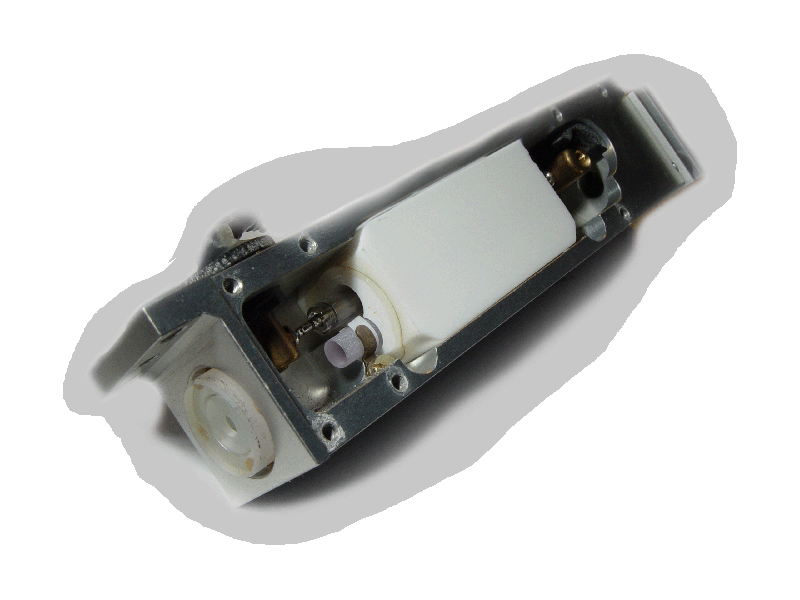
This is a small Q-switched Nd:YAG laser, for which I think
that has output energy up to 0.5 J and unknown peak power.
Material for passive Q-switch is also unknown. Output coupler is pre-aligned and HR mirror has
three screws for alignment. I got this laser as a gift, so I'm happy to use it for my
experiments. It works very well, more than I expect, and it's capable to burn and evaporate
many materials when focused, and make little craters. Laser is powered with two electrolyte
capacitors of 620 µF at 315 Volts (near 62 Joules of input power). Trigger is piezo electric
element from lighter (for now — temporary solution). |

This laser is capable to produce air breakdown when beam is focused with a short focus lens.
Interesting is that every time produced breakdown is different. Why?!?!
(Possible explanation at bottom of this page.) |
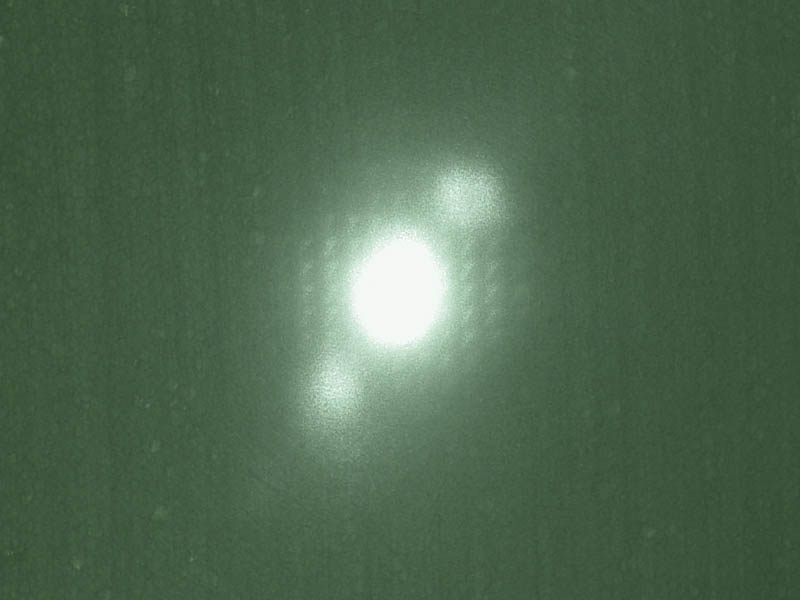
This is laser spot on the wall captured by digital camera with a "night shot" setting.
Raster around central spot is actually an artifact from CCD inside camera, but two weak spots
are maybe due to misaligned mirrors. Because at "night shot" I haven't any control (all is
automatically adjusted), spot appear bigger than it actually is. |
June, 26 & 27, 2005:
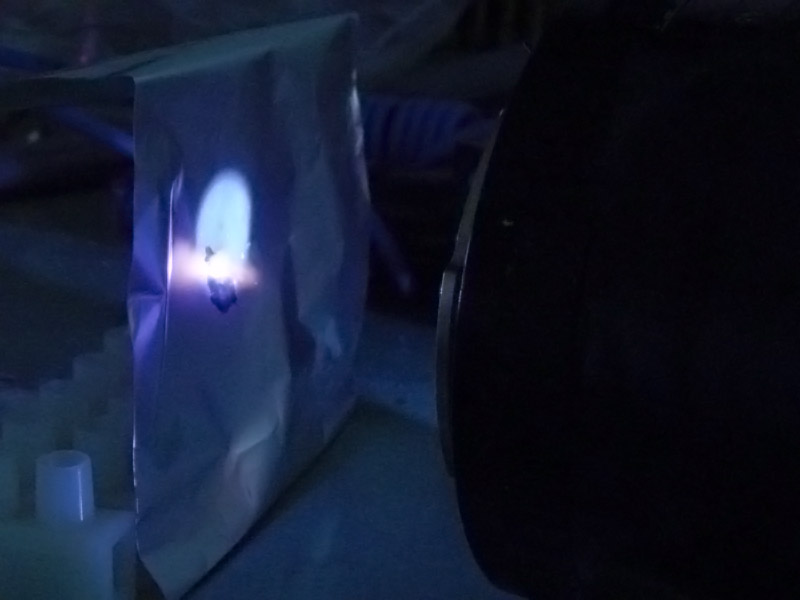
With the lens from a damaged film camera "Practica", 50 mm focal length, laser is focused
to little spot causing evaporating material. |
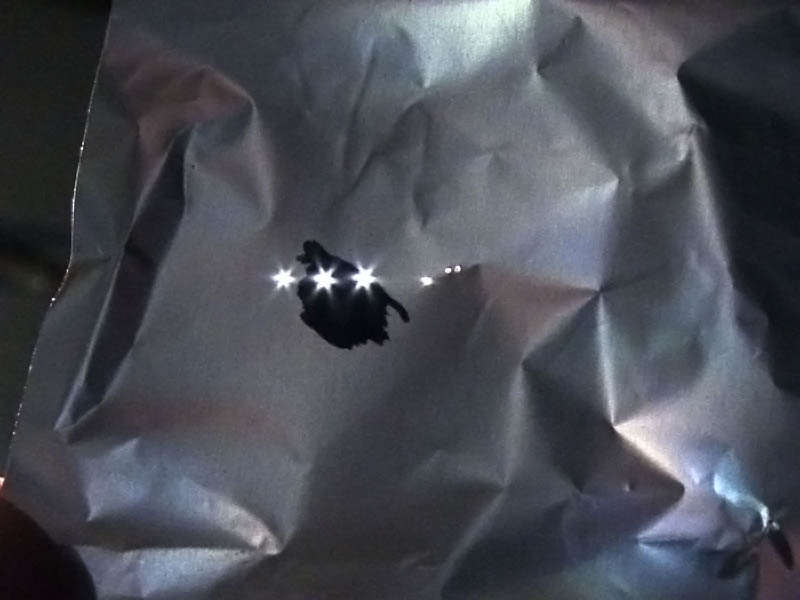
Painted black or not, wavelength of 1064 nm is enough absorbed by aluminum surface to evaporate
material and make holes. |

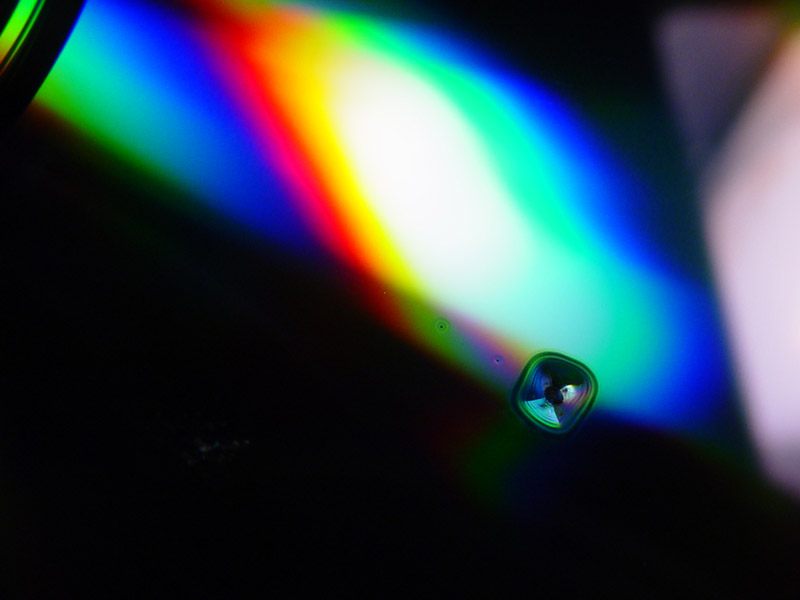
Here is how looks burned CD... Two small holes are probably from lens flares.
(Multiply reflection from lens surfaces — lens is antireflective coated
for visible light, not for near IR - 1064 nm) |
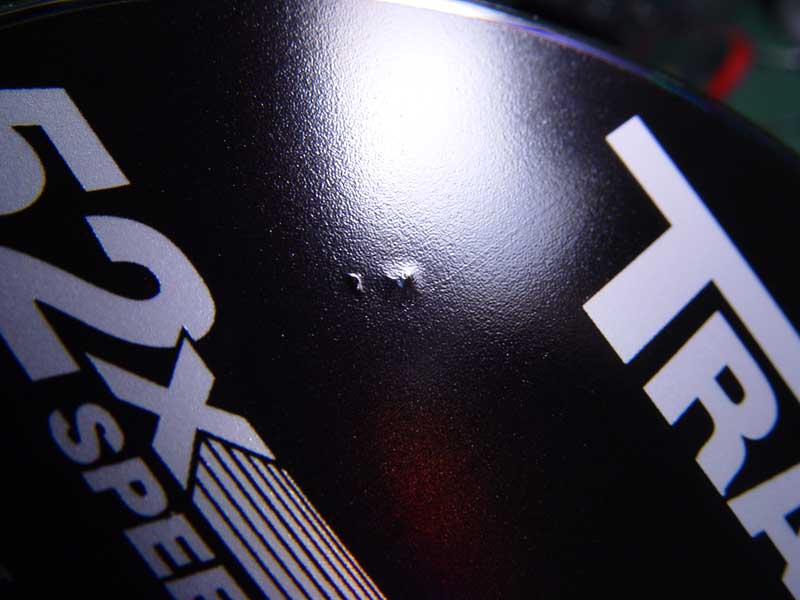
Another side of CD. Evidently damaged. |
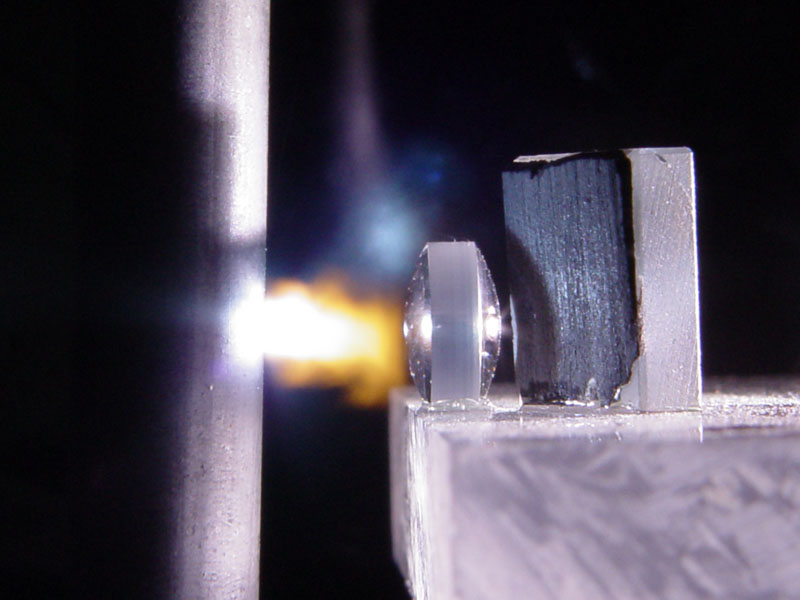

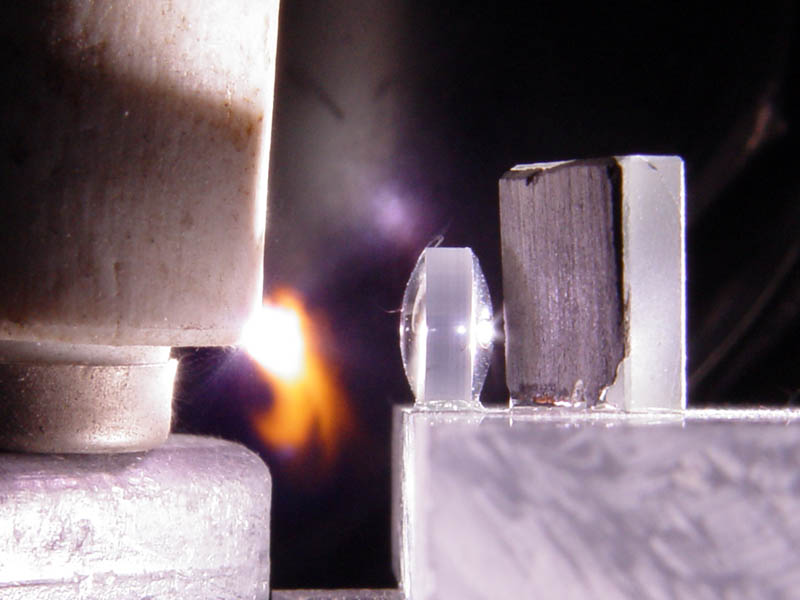
26 Amp. fuse — firstly evaporated surface impurities,... |
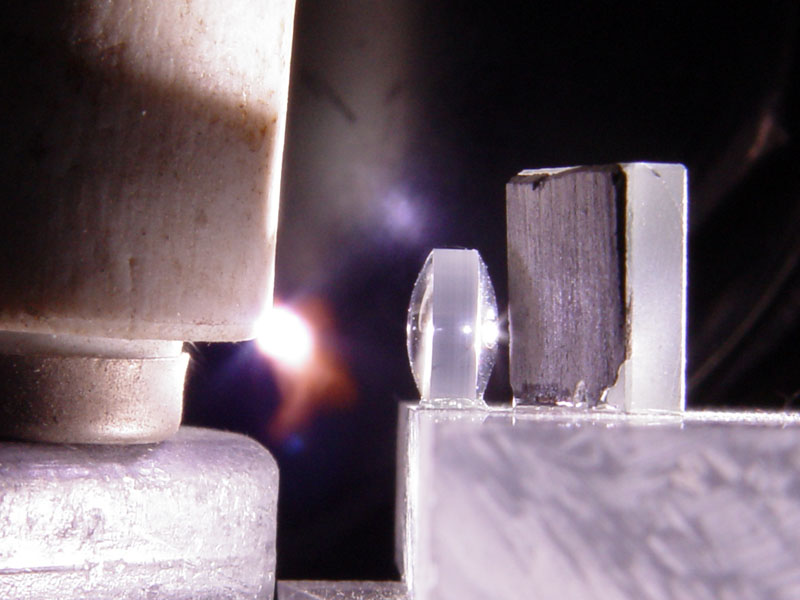
...then evaporated ceramic itself. |
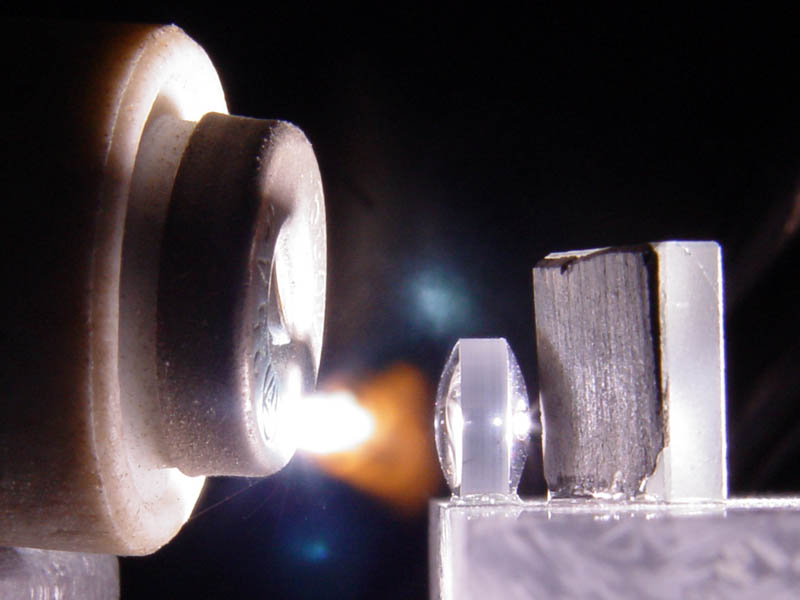
Another example of impurities evaporation firstly,... |
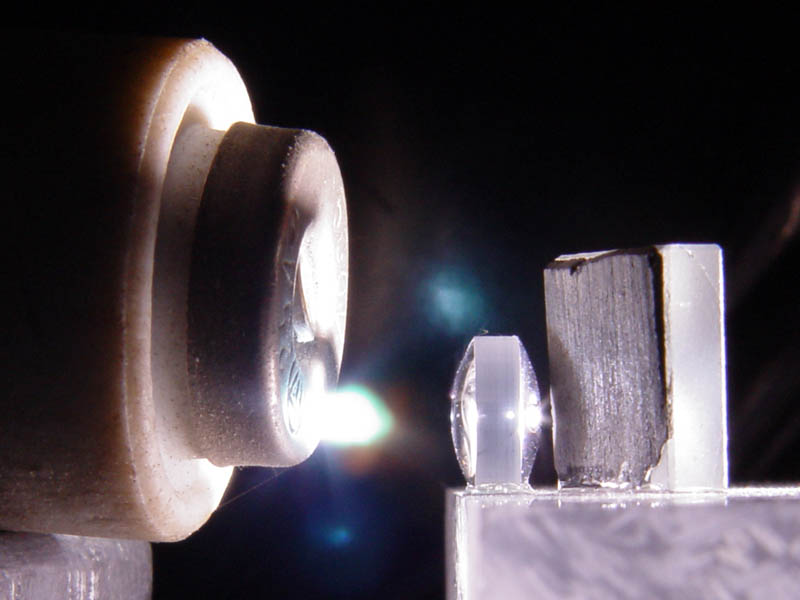
...then evaporated zinc and copper. |

An “eruption” of PVC material. |
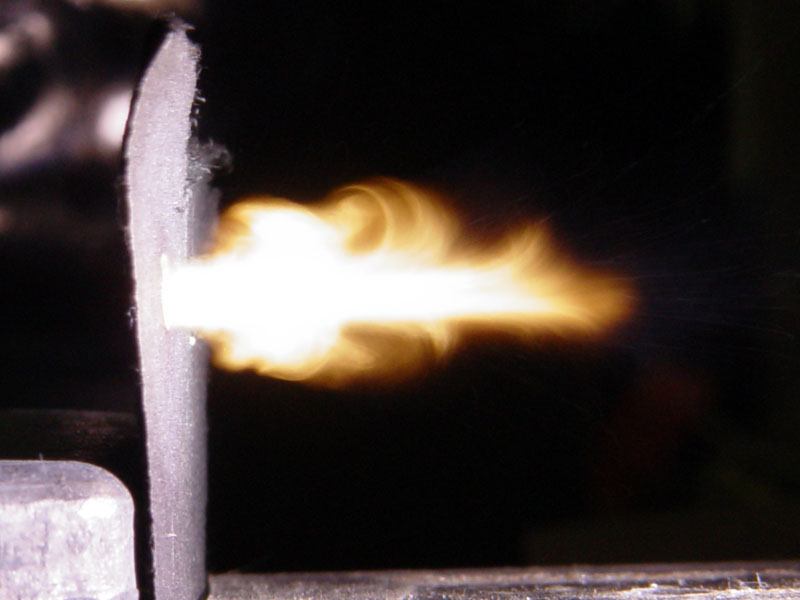
Mostly amazing is black paper for painting — unfocused beam cause strong evaporation.
This is maybe because paper consist a lot of carbon — at high voltage this paper is conductive!
Next experiment will be with activated charcoal to confirm whether carbon mostly strongest evaporate. |
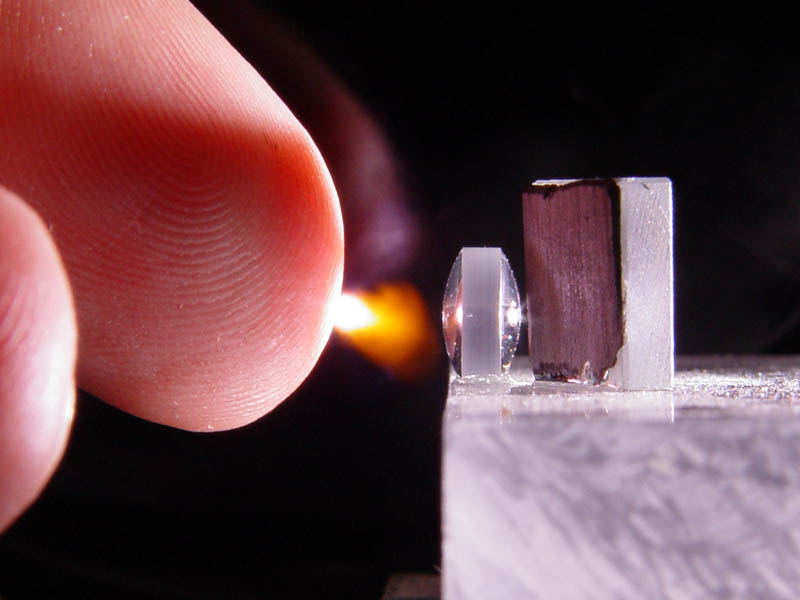
Ouch!!! (actually, it not hurt — only a skin surface evaporate, and laser not penetrate deeply) |

Ouch, twice!!! (now, it little hurt because finger is black painted and little amount of heat is transferred deeply into skin) |

This is a screen shot of short movie of non-focused shot at PVC plastic: |
Normal speed (1.23 MB),
Same movie, but slow motion (3.75 MB)
June, 28, 2005:
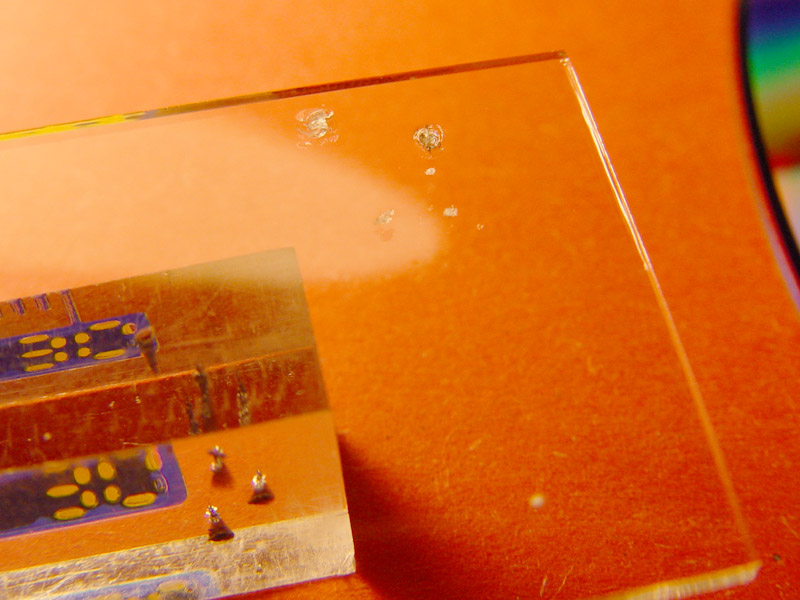
This picture show crackles on microscope slide caused by focused beam. |
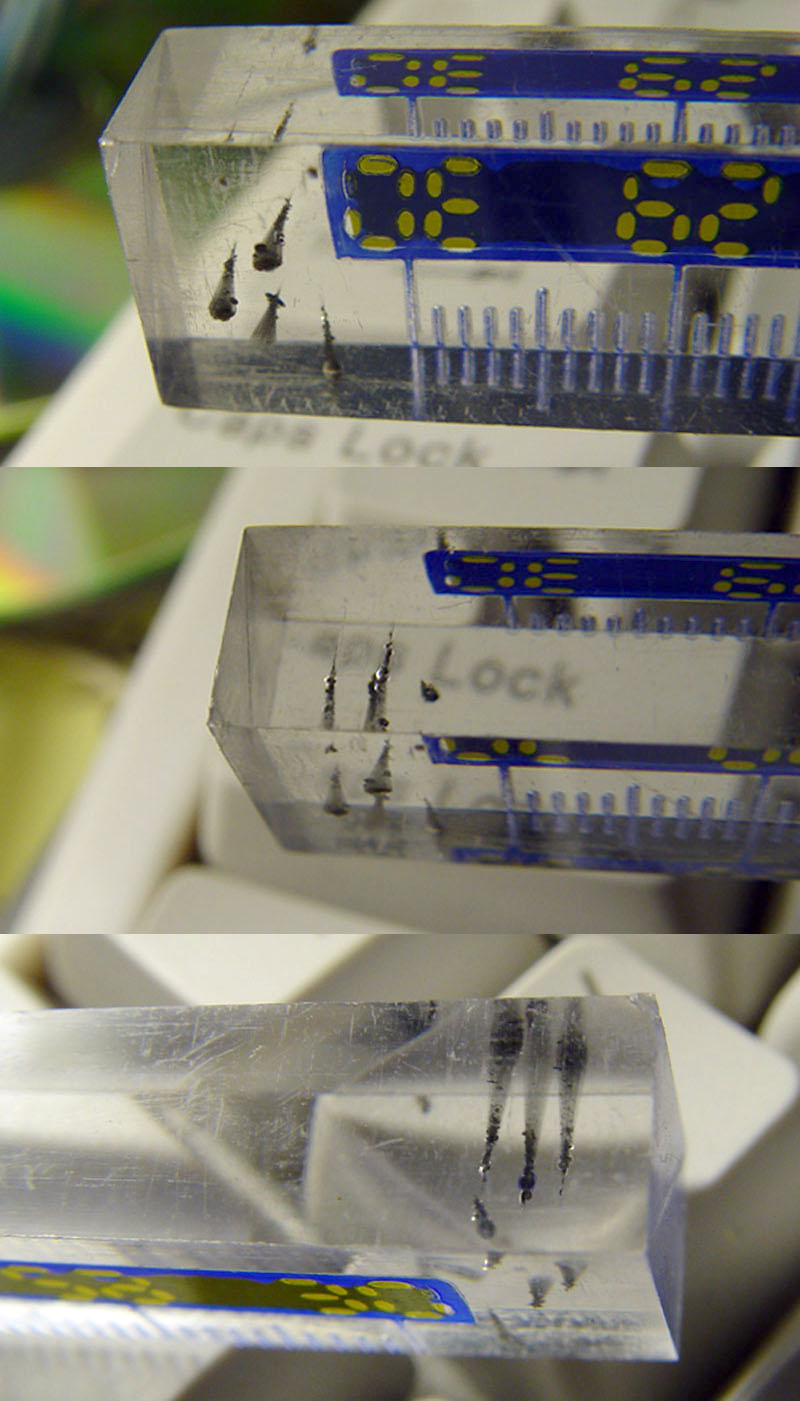
Cheap ruler has strange black traces inside plastic with small bubbles. Black colored cones
are probably connected with carbon inside this plastic. Perhaps strong laser beam cause
decomposition of this material. |
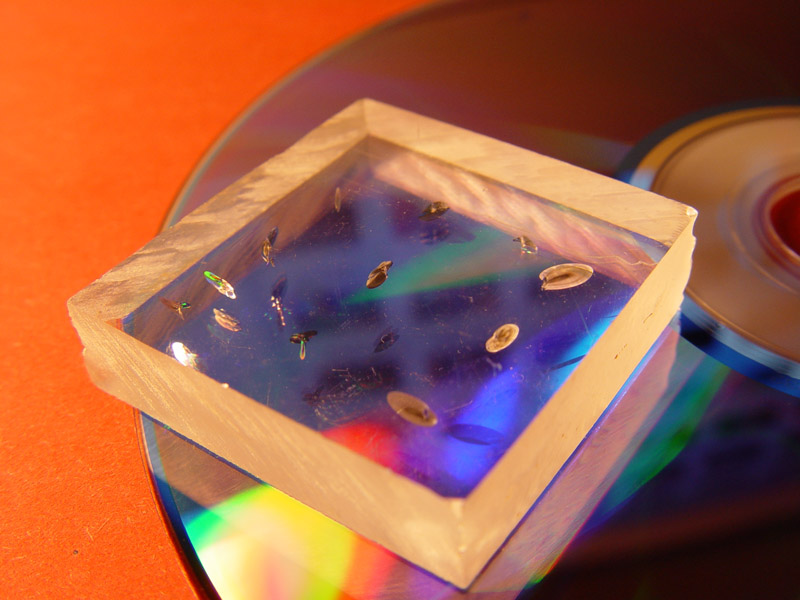
Crackles inside plexiglass. Strange! |
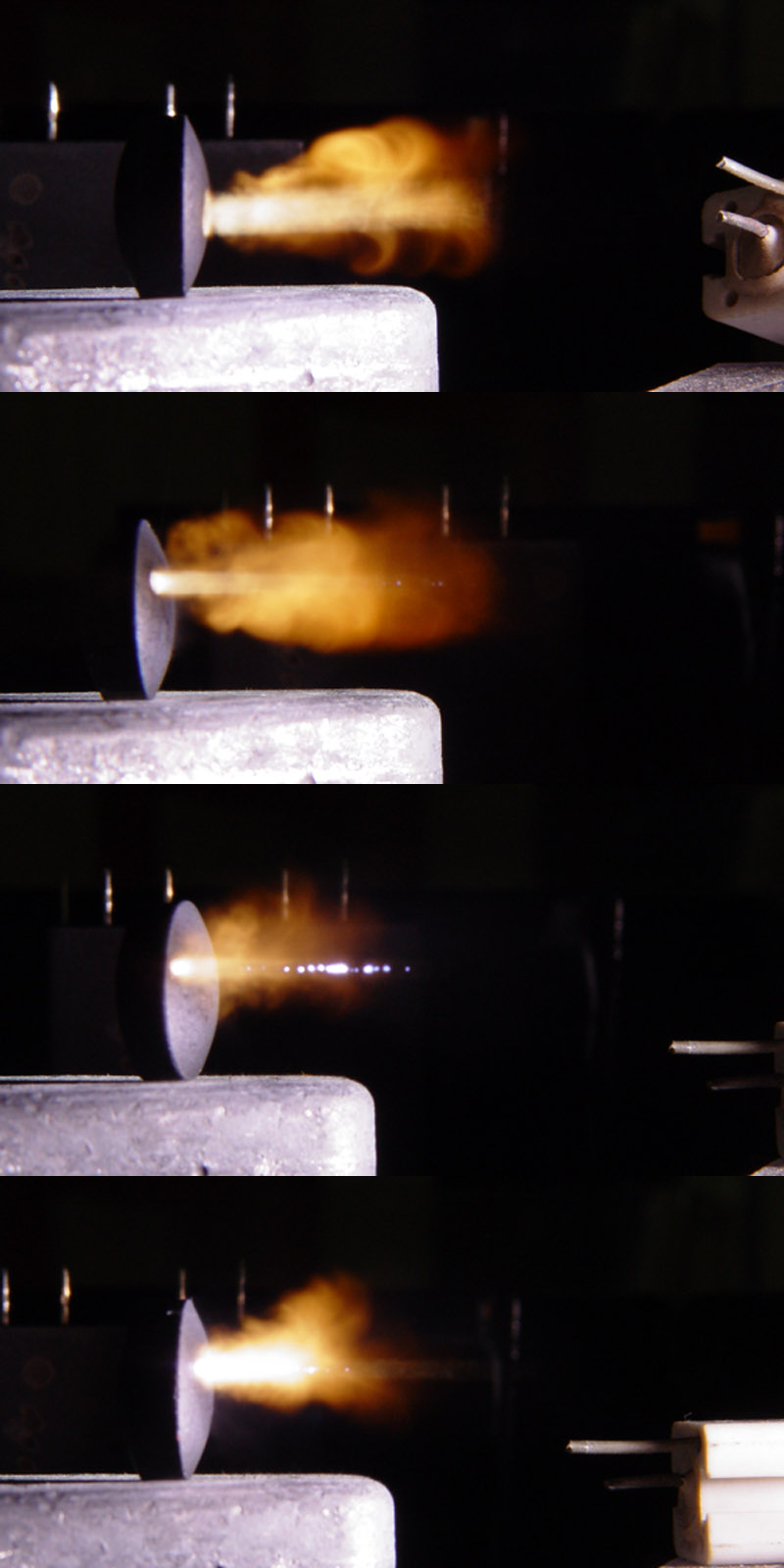
Activated charcoal tablets (for diarrhea etc...). Interesting thing is that laser beam is visible
inside a carbon cloud. First picture in series is non-focused laser beam. Second picture is
little out from focus, and each next pictures is closer to focus point.
At last three pictures are evident presence of breakdown, but I’m not so sure that it
is an air breakdown, but this is maybe carbon, carbon monoxide or carbon dioxide ionization??? |
Now, come back to top of this page!!! I think I have answer why every time air breakdown is
different; since I was close to laser output, and breathe toward laser, small amount of CO2
come from my lungs. But, I’m not every time at same distance from laser when took this
pictures. Proof for this phenomenon will be easily get; I have bottles of Helium, Nitrogen,
and CO2, so I can put gas outlet close to focal point and fire laser. |
I did this test, but result is disappointing — CO2 and N2 not shown any changes, but with
Helium it not make breakdown at all. Now is question: why? (In phone talk with Mr. Jon Singer, he
explained that this breakdown is actually electrical ionization.) So, Helium has very high ionizing
potential, and can't ionize so easily. Carbon cloud very easily ionize, so this is maybe reason why
focused spot on some carbon vaporizing target make multiple white breakdown. |
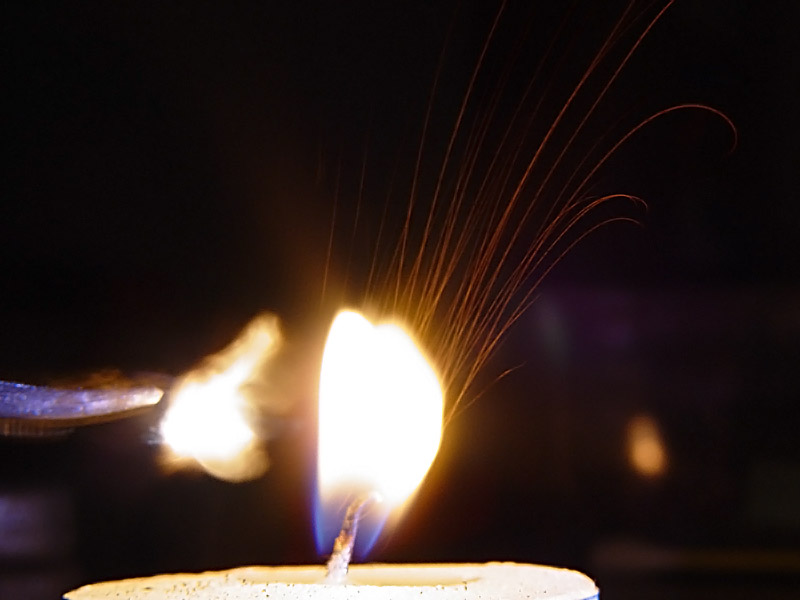
This picture show evaporated carbon and fired with the candle. Not a scientific value, but it looks good. |
Funny (slow) motion .mpg movie of tablets after focused laser fire (876 kB).
This mean that this laser is enough powerful to move little objects by strong evaporation of material.























